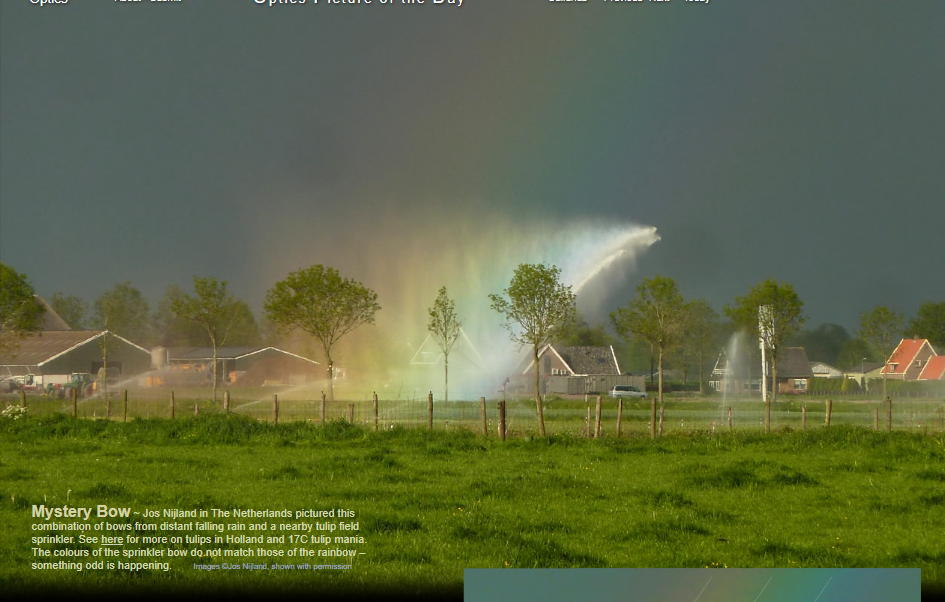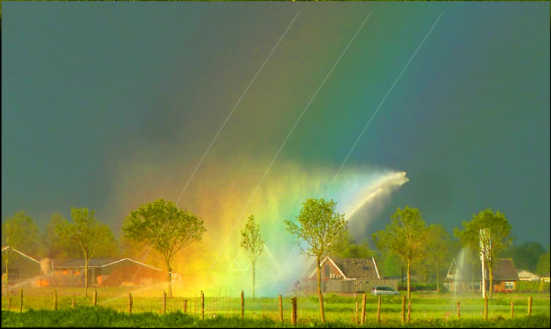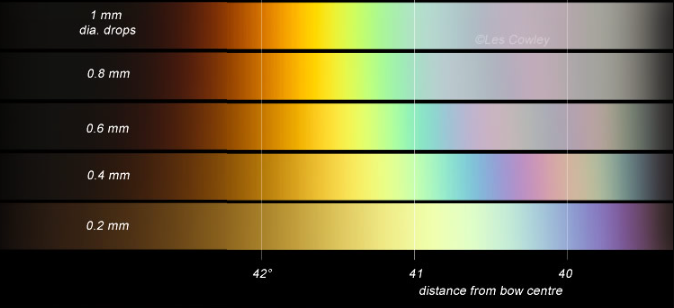Mystery Rainbow in Tulip Field - OPOD
Mystery Rainbow in Tulip Field - Exploring the Phenomenon
Rainbows have always captivated our imagination with their vibrant colors and ethereal beauty. However, there are instances when these natural wonders surprise us with their peculiar characteristics. One such instance is the "Mystery Rainbow in Tulip Field" captured by Jos Nijland in The Netherlands. This fascinating photograph showcases a combination of bows from distant falling rain and a nearby tulip field sprinkler, leaving us intrigued by the unusual color variations. Let's delve deeper into this phenomenon and uncover the secrets behind this enigmatic rainbow.
OPOD, an online platform dedicated to atmospheric optics, often emphasizes that rainbows from distant and nearby rain are the same and are merely illusions at infinity. However, the rainbow in the tulip field seems to defy this notion. A closer examination reveals that the colors of the sprinkler bow do not align with those of the distant rainbow, indicating that something extraordinary is occurring here.
The disparities in color between the two bows can be attributed to the differences in the size of the water droplets responsible for their formation. As the sprinkler jet disperses water, small droplets tend to drift almost horizontally due to wind, while larger drops sink down quickly closer to the main jet. Consequently, across the spray, there exists a gradient of droplet sizes, with smaller droplets at the top and larger ones lower down and closer to the main jet. This variation in droplet size dramatically alters the appearance of the sprinkler bow, leading to its distinct color profile.
To further understand this phenomenon, accurate Mie theory computations were performed to simulate bows produced by different-sized water droplets. These computations revealed some fascinating insights. As the size of the water droplets decreases, the bow broadens, causing the colors to shift inwards. Additionally, as the droplet size decreases, the colors weaken, resulting in a white-straw color for a 0.2mm diameter droplet bow, similar to the color observed at the top of the sprinkler spray. Furthermore, the computations also unveiled the presence of purple-green bands known as supernumeraries, which are particularly prominent when monosized drops are used in the calculation.
The "Mystery Rainbow in Tulip Field" offers a captivating glimpse into the intricate workings of atmospheric optics. By examining the differences in color and appearance between the distant rainbow and the sprinkler bow, we gain a deeper appreciation for the complex interplay of water droplet size, light refraction, and atmospheric conditions that give rise to these optical phenomena.
In conclusion, while rainbows have long fascinated us with their enchanting allure, the "Mystery Rainbow in Tulip Field" adds a touch of intrigue to our understanding of these natural wonders. Through careful observation and scientific analysis, we can unravel the secrets behind the peculiar color variations and distinct characteristics of this enigmatic rainbow. This serves as a reminder of the boundless beauty and mystery that nature holds, always ready to surprise and captivate us with its wonders.

Mystery Bow ~ Jos Nijland in The Netherlands pictured this combination of bows from distant falling rain and a nearby tulip field sprinkler. See here for more on tulips in Holland and 17C tulip mania. The colours of the sprinkler bow do not match those of the rainbow – something odd is happening. Images ©Jos Nijland, shown with permission

OPOD repeatedly says that bows from distant and nearby rain are the same and that both are illusions apparently at infinity. Is this an exception?
The colour enhanced version of the tulip sprinkler bow (right) is clearly different from that from the distant rain. Yellows and green of the sprinkler bow are moved towards the right. The colour bands are also tilted in a different direction. The top of the windblown spray has no definite colour at all.
Differences in the size of the drops making the bows can cause these effects. Spray is being carried away sideways from the main sprinkler jet. Very small droplets will drift almost horizontally. Large drops will sink down quickly close to the jet. Across the spray there will be a gradation of droplet sizes � small at the top and becoming larger lower down and closer to the main jet.
All this changes the appearance of the sprinkler bow.

At right some accurate Mie theory computations of bows for different size drops.
The bow broadens as drop size decreases. Yellows, greens and blues shift inwards.
Colours weaken as the drop size decreases. The 0.2mm diameter droplet bow is a white - straw colour and compares with that at the top of the sprinkler spray.
The purple-green bands at right are supernumeraries. They are prominent because monosized drops were used in the calculation.

Note: this article has been automatically converted from the old site and may not appear as intended. You can find the original article here.
Reference Atmospheric Optics
If you use any of the definitions, information, or data presented on Atmospheric Optics, please copy the link or reference below to properly credit us as the reference source. Thank you!
-
<a href="https://atoptics.co.uk/blog/mystery-rainbow-in-tulip-field-opod/">Mystery Rainbow in Tulip Field - OPOD</a>
-
"Mystery Rainbow in Tulip Field - OPOD". Atmospheric Optics. Accessed on November 26, 2024. https://atoptics.co.uk/blog/mystery-rainbow-in-tulip-field-opod/.
-
"Mystery Rainbow in Tulip Field - OPOD". Atmospheric Optics, https://atoptics.co.uk/blog/mystery-rainbow-in-tulip-field-opod/. Accessed 26 November, 2024
-
Mystery Rainbow in Tulip Field - OPOD. Atmospheric Optics. Retrieved from https://atoptics.co.uk/blog/mystery-rainbow-in-tulip-field-opod/.